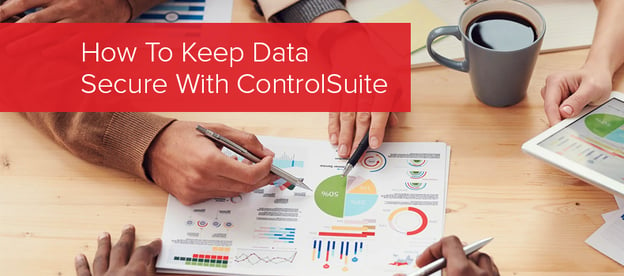Stay up to date with our latest news and insights
Supporting description on the types of content that feature in the blog.

How is your company securing devices to protect data?
Despite advanced security being available, companies are still failing to implement adequate data security. The risk of any kind of breach goes beyond an IT risk, but one for the entire business.
In Gartner’s recent publication How to Respond to the 2022 Cyber threat Landscape, Gartner reported that many businesses are struggling to adequately address the emerging threats that the hybrid workplace has presented in recent years. Because organisations cannot predict when or how the attacks will be, it is crucial for businesses to prepare every aspect of their business—not just the IT department.
We can’t stress this enough: it’s time for organisations to ensure they have the correct level of data security in place and review the security on a regular basis. This includes every part of your IT infrastructure with an emphasis on document-related processes, we’ve had positive experiences with ControlSuite’s tools to protect your data from the beginning of the document’s journey to the end.
Every time a document is copied, printed, scanned or emailed, it’s creating new possibilities for a data breach and each part of the process is vulnerable to human error.
Consider the healthcare industry, where data can quite literally be life-saving. However, if patient data gets breached through even a simple human error in one of the many touchpoints in the document process and ends up in the wrong hands, the result can be devastating.
“Eight in ten healthcare information breaches were caused by miscellaneous errors, privilege misuse or web applications, while six in 10 were caused by internal users.” (How to Keep Healthcare Data Secure: Authorize Users, Track Activity, Kofax)
So, how can organisations ensure that every stage of their document processes are secure?
Below are a few simple steps to get started:
Step 1: Review who needs to access what, starting with your MFDs.
Ask questions like, who needs access to different systems? And for which activities do different users require device permission?
All devices that contain personal or sensitive information should be secured at all times - especially portable devices that can easily be stolen or where employees take them home or even leave them unattended in vehicles or other remote locations.
Anyone who has access to the MFDs should be assigned credentials and have a secure way to access the device. Permissions should also be set so only the appropriate people can access or print certain information in order to reduce the risk of sensitive information being left lying around.
Step 2: Create an audit trail. Log and track all activity across the network.
From hot desking to hybrid working, employees often work from different locations on unsecure networks. It’s important to be able to track all of this activity.
Consider multi-office environments where staff are moving and require access to devices and MFDs in different locations. If you can’t track this behaviour, you leave gaps in the document process and data potentially becomes a security risk if you can’t easily track the source of a breach.
Audit trails and the ability to track the document process at every step helps to keep the data secure, and in the event of a data breach can be dealt with quickly and efficiently.
These two steps can be implemented with Kofax’s ControlSuite with no disruption to your existing infrastructure and minimal IT resources required. This simple solution can help to keep data secure and ensure that only the appropriate users can carry out certain actions, and it gives you the necessary information to trace who, where and how it happened to prevent a future breach.
If you have no time to do an assessment, ask a Xenith technical expert.
Supporting description on the types of content that feature in the blog.

20-09-2024
Digital document management tools offer a range of compelling benefits for businesses, including a PDF editor, a file converter and a form generator. You can also integrate with digital signatures qui...

20-09-2024
When choosing a SaaS software to deal with your company’s PDF documents and enable forms to be digitally sent and signed, you’ll want a product that’s user-friendly and easy to use. With Tungsten’s Po...

11-07-2024
Belkin is a global technology company that provides high-quality electronics products, from wireless chargers to power banks. Their people-centric approach and best-in-class functionality have positio...